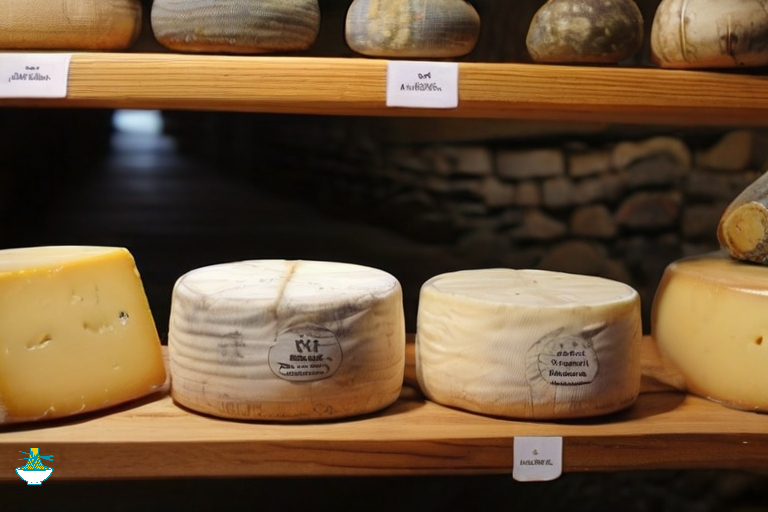Nestled in the breathtaking landscapes of the Pyrenees lies Andorra, a small European gem celebrated not only for its stunning scenery but also for its rich culinary heritage. Among the many gastronomic treasures that Andorra proudly boasts, one stands out with its unique flavor and cultural significance – Andorra Mató de Pedra. This delectable recipe, deeply rooted in local tradition, is a testament to the culinary craftsmanship that has been passed down through generations.
Andorra Mató de Pedra, translated as "Andorra Stone Cheese," is a delightful culinary creation that encapsulates the essence of Andorran culture. The dish reflects the resourcefulness of the mountainous region's inhabitants, utilizing local ingredients to craft a delicacy that transcends its humble origins. Join us on a culinary journey as we unravel the secrets behind Andorra Mató de Pedra, exploring the ingredients, the meticulous preparation, and the cultural significance that make it a cherished part of Andorran cuisine. Embark with us on a savory adventure that transports your taste buds to the heart of the Pyrenees, where tradition meets innovation in a dish that tells the story of a community's love for its land and its culinary heritage.
Ingredients:
- 2 liters of fresh whole milk (preferably from a local source)
- 1/4 tablet of rennet or 10 drops of liquid rennet
- 1/4 teaspoon of calcium chloride (if using pasteurized milk)
- 1/4 teaspoon of cheese culture or buttermilk with active cultures
- A pinch of salt
- Clean and clear drinking water
Instructions:
Prepare the Milk:
1-Pour the fresh whole milk into a large, stainless-steel pot. If using pasteurized milk, add the calcium chloride and stir well.
2-Heat the milk gradually to 86°F (30°C) over medium heat. Use a thermometer to monitor the temperature.
Add Rennet:
1-Dissolve the 1/4 tablet of rennet in a small amount of clean, cool water. If using liquid rennet, measure out 10 drops.
2-Once the milk reaches 86°F (30°C), remove it from the heat and gently stir in the dissolved rennet using an up-and-down motion.
Let the Curd Form:Cover the pot and let it sit undisturbed for about 45-60 minutes, allowing the curd to form. Check for a clean break by inserting a knife and lifting a small portion of the curd.
Cut and Cook the Curd:
1-Cut the curd into small, uniform pieces using a long knife, creating small cubes.
2-Heat the curds slowly to 104°F (40°C) over the course of 30 minutes, stirring gently to prevent matting.
Drain and Salt the Curds:
1-Allow the curds to settle at the bottom of the pot. Carefully pour off the whey, leaving the curds behind.
2-Transfer the curds to a cheese cloth-lined colander to drain. Sprinkle a pinch of salt over the curds and mix gently.
Shape the Cheese:Gather the corners of the cheese cloth and tie them together, creating a pouch. Hang the pouch to drain for 4-6 hours, or until the desired consistency is reached.
Enjoy Andorra Mató de Pedra:Once the cheese has drained and firmed up, unwrap and marvel at your homemade Andorra Mató de Pedra. Slice it and savor the unique flavors of this local delicacy.
Serve your Andorra Mató de Pedra with local honey, fresh fruits, or crusty bread for an authentic taste of Andorran tradition. Bon appétit!
Nutritional Values:
Nutritional values for the ingredients are generally per 100 grams:
Fresh Whole Milk:
- Calories: 61 kcal
- Protein: 3.2 g
- Fat: 3.3 g
- Carbohydrates: 4.7 g
- Calcium: 113 mg
- Vitamin D: 0.5 µg
Benefits: Rich in calcium for bone health, a good source of protein for muscle development, and provides essential vitamins like Vitamin D for overall well-being.
Rennet (1/4 tablet):
- Rennet itself doesn't contribute significantly to nutritional content as it is primarily an enzyme used for coagulation and doesn't remain in the final product.
Benefits: Rennet is an enzyme crucial in the cheese-making process. It aids in coagulating the milk, forming curds, and separating whey, resulting in the desired cheese texture.
Liquid Rennet (10 drops):
- Rennet itself doesn't contribute significantly to nutritional content as it is primarily an enzyme used for coagulation and doesn't remain in the final product.
Calcium Chloride (1/4 teaspoon):
- Calcium content: Approximately 80 mg
Benefits: Especially useful when using pasteurized milk, calcium chloride helps ensure a proper coagulation process by enhancing the calcium content in the milk.
Cheese Culture or Buttermilk (1/4 teaspoon):
- Calories: 40 kcal
- Protein: 3.3 g
- Fat: 2.3 g
- Carbohydrates: 1.7 g
- Calcium: 122 mg
- Vitamin D: 0.1 µg
Benefits: Introduces beneficial bacteria to the milk, promoting fermentation and acid production. This contributes to flavor development, texture, and helps inhibit the growth of harmful bacteria.
Pinch of Salt (estimated 1/4 teaspoon):
- Sodium: Approximately 590 mg (Note: This can vary based on the type and amount of salt used)
Benefits: Enhances flavor, acts as a preservative, and regulates the activity of enzymes during the cheese-making process. It also adds a savory balance to the final product.
Clean and Clear Drinking Water:
- Water contributes no calories, but it's essential for the hydration of the cheese-making process.
Benefits: Essential for hydration, water is a universal solvent that aids in dissolving and distributing the ingredients. It plays a crucial role in various chemical reactions during cheese-making.
Keep in mind that these values are approximate and can vary based on the specific brands and types of ingredients used. Additionally, the nutritional content of the final cheese will depend on the draining time and other factors in the cheese-making process.


Comments